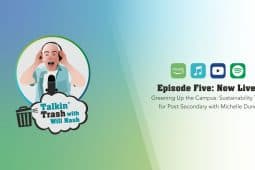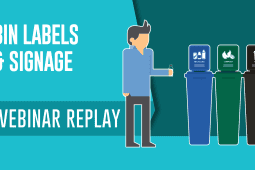What is a Waste Diversion Team?
A waste diversion team is a group of people who have a common passion for making their organization more sustainable, specifically focusing on how waste is generated and disposed of. Responsibilities of a waste diversion team can include campaigning for a recycling program, conducting waste audits, creating waste reduction strategies or educating coworkers on the importance of recycling and organics. Not only does having a committed waste diversion team help the environment, but it can also improve employee morale, create cost-saving benefits and attract talent! The possibilities of what a waste diversion team can achieve are endless!
If this sounds like something you need within your organization, then here are a few easy steps on how to create your very own waste diversion team!
Step 1: Make a Commitment
Let your employees know that the company is taking its commitment to sustainability to the next level, and one of the ways you are achieving this is by creating your very own waste diversion team. This announcement can be made at companywide meetings or sent through email. Let people know that if this is something they are passionate about, then they are welcome and encouraged to make a commitment and join the team!
Step 2: Assemble the Team
When creating the team, ensure that there are members from various areas of your organization. This will bring different perspectives and ensure that the entire company is represented. Depending on the size of the team it might be a good idea to create a steering committee as well. A steering committee would take on more responsibility, and roles such as scheduling meetings, approving budgets, planning meeting agendas and providing direction to the entire waste diversion team.
Step 3: Conduct an Initial Meeting
The team’s first meeting is where the ideas start flowing! This meeting will be a great opportunity to start brainstorming, introduce all team members, while also determining what the team would like to accomplish! Now is also the time to determine team roles and establish how often your meetings will occur.
Step 4: Determine Goals
In order to determine the team’s goals, it is vital to discuss problems that have been occurring within your organization. Maybe you have noticed that co-workers are throwing apple cores in the waste instead of utilizing the organics program, or people are not stopping to look at the bin signage because it isn’t optimally placed. Noticing these issues are key in improving and tailoring your organization’s waste diversion program!
On top of the discussion, it is ideal to complete an organization-wide waste audit. This can be conducted by your waste diversion team or by an outside consulting service. A waste audit will provide a variety of insights that can help improve your waste diversion program. For example, a waste audit will unveil whether items are being placed in the correct bins. This can determine contamination rates; provide information that will help improve signage and identify if new streams need to be added to your program. Through a waste audit, you could find out that coffee cups are being thrown into the waste stream even though they’re compostable with your hauler. Now that the team is aware that users don’t know this, the team can update organics signage to include coffee cups or discuss adding a coffee cup stream if the office is generating a considerable amount of coffee cups.
A waste audit will provide scientific data to help back your goals as well as monitoring them throughout the years to come!
Step 5: Spread the Word
Now it’s time to let your organization know that the team has been created, who is involved and the goals you are working towards. Communication with employees is key to ensure the success of your team and your program! Be creative with your communication methods, these can include informative games, emails, posters, workshops or announcements at company meetings.
Step 6: Continuous Commitment
The final step is to ensure that there is a continuous commitment from the team! The team needs to monitor the program to see how things are going and make any changes if needed. The team will also change and grow too, members may change, goals can be revised, and budget fluctuates but the team’s commitment should always focus on improving waste diversion within the organization.








